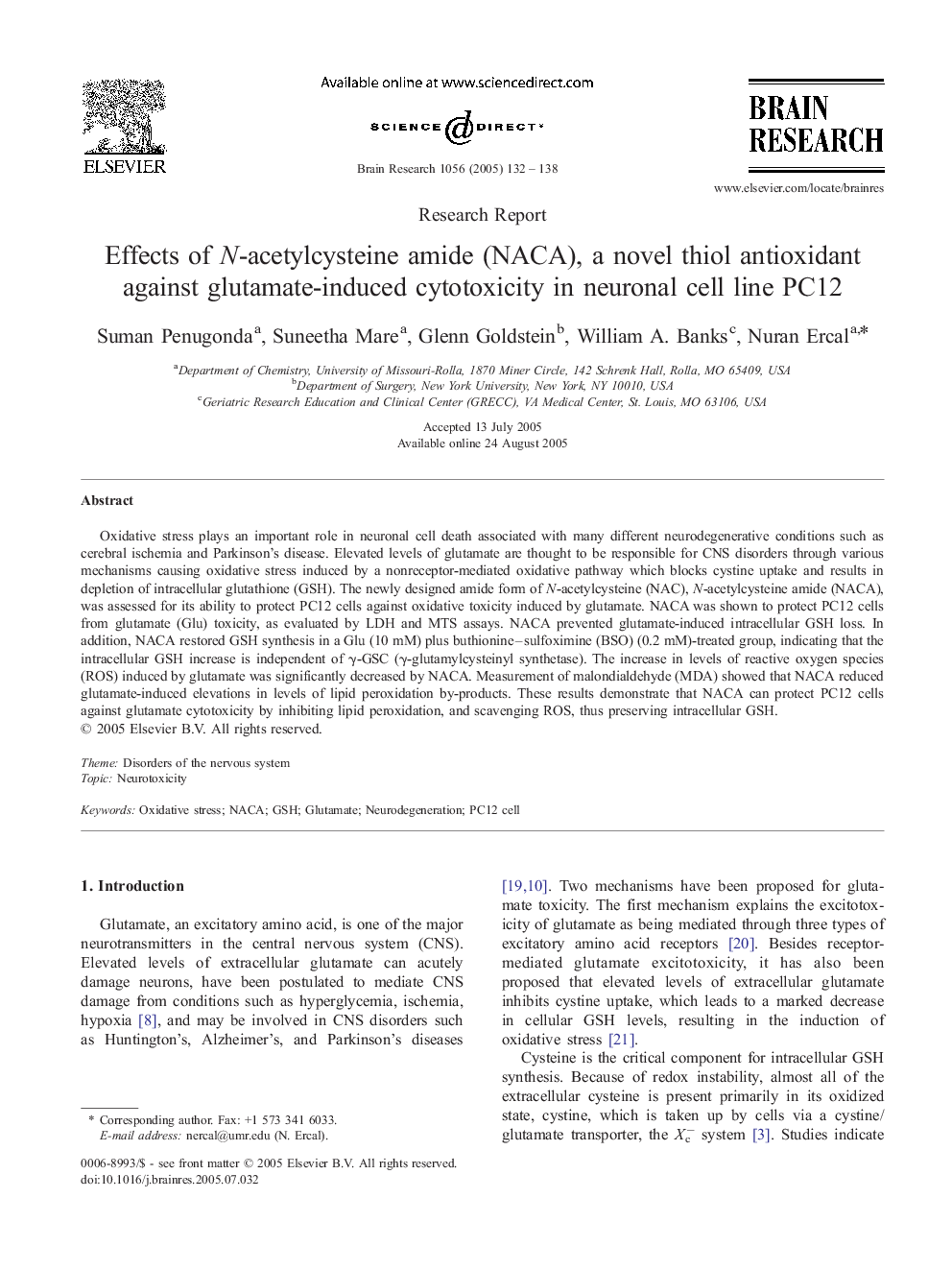| Article ID | Journal | Published Year | Pages | File Type |
|---|---|---|---|---|
| 9416013 | Brain Research | 2005 | 7 Pages |
Abstract
Oxidative stress plays an important role in neuronal cell death associated with many different neurodegenerative conditions such as cerebral ischemia and Parkinson's disease. Elevated levels of glutamate are thought to be responsible for CNS disorders through various mechanisms causing oxidative stress induced by a nonreceptor-mediated oxidative pathway which blocks cystine uptake and results in depletion of intracellular glutathione (GSH). The newly designed amide form of N-acetylcysteine (NAC), N-acetylcysteine amide (NACA), was assessed for its ability to protect PC12 cells against oxidative toxicity induced by glutamate. NACA was shown to protect PC12 cells from glutamate (Glu) toxicity, as evaluated by LDH and MTS assays. NACA prevented glutamate-induced intracellular GSH loss. In addition, NACA restored GSH synthesis in a Glu (10 mM) plus buthionine-sulfoximine (BSO) (0.2 mM)-treated group, indicating that the intracellular GSH increase is independent of γ-GSC (γ-glutamylcysteinyl synthetase). The increase in levels of reactive oxygen species (ROS) induced by glutamate was significantly decreased by NACA. Measurement of malondialdehyde (MDA) showed that NACA reduced glutamate-induced elevations in levels of lipid peroxidation by-products. These results demonstrate that NACA can protect PC12 cells against glutamate cytotoxicity by inhibiting lipid peroxidation, and scavenging ROS, thus preserving intracellular GSH.
Keywords
Related Topics
Life Sciences
Neuroscience
Neuroscience (General)
Authors
Suman Penugonda, Suneetha Mare, Glenn Goldstein, William A. Banks, Nuran Ercal,
